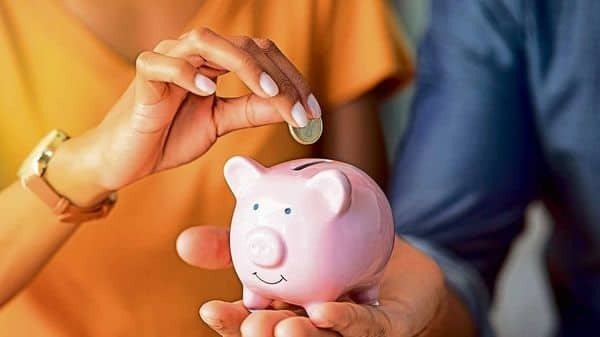SYNOPSIS
In a pandemic-induced financial distress phase, a majority of the people preferred to save.
Intuitively, if we go back to the initial phase of lockdown, what comes to mind? Financial hardships, job losses, small businesses closing down, people availing of loan moratorium, etc.
Now, how will it sound if I tell you that the financial savings of people went up in April-June 2020?
Paradoxical?
Yes.
Let’s look at data compiled by the Reserve Bank of India. In April-June 2020, household financial savings was ₹8.16 trillion. For a perspective on how big this is, in April-June 2019, household financial savings was ₹2.02 trillion; in July-September 2019, it was ₹4.85 trillion and in the two following quarters it was ₹4.2 trillion and ₹5.14 trillion, respectively.
As a percentage of gross domestic product (GDP), this looks more humongous. It was 21% of GDP in April-June 2020 (the lockdown quarter) against 4% of GDP in April-June 2019. In the three following quarters, it was 9.8%, 8.1% and 9.8%, respectively. In the immediate quarter after April-June 2020, would you expect savings to move up, as things were opening up gradually and people were getting back their livelihood?
Again, counter-intuitive.
In July-September 2020, household savings was ₹4.92 lakh crore, or 10.4% of GDP. The data mentioned here is from the latest issue of RBI bulletin; we do not have data for October-December 2020.
Now, the rationale. Household savings as a percentage of GDP going up to 21% in April-June 2020 has also to do with the fact that GDP declined by 24% in that quarter.
Nonetheless, in absolute terms, ₹8.16 trillion was about four times higher than ₹2.02 trillion in April-June 2019. This has got to do with the human response to an emergency situation. When things are looking bleak, one does not know how worse it can get. Discretionary spending was cut down; outlets being closed was one of the reasons. While one section of the population was losing jobs and opting for moratorium on loans—now we know, in hindsight, that it was not the entire population—people with access to means were rather saving than spending.
To dig one step into the data mentioned earlier, household financial savings is the net of flow of financial assets minus flow of financial liabilities. In April-June 2020, flow of financial assets at ₹7.38 trillion was much higher than ₹3.83 trillion of April-June 2019, but lower than ₹7.86 trillion of January-March 2020, which was a near-normal quarter. The big difference was the flow of financial liabilities. In April-June 2020, it was a negative ₹0.78 trillion over a positive ₹1.81 trillion in April-June 2019 and a positive ₹2.72 trillion in January-March 2020. That is, people paid off their liabilities in April-June 2020, whereas usually they add to it. In a phase when people were opting for moratorium on loans, paying off of financial liabilities is a conundrum. But we are talking of hard data.
Things normalized in July-September 2020. Flow of financial assets rose to ₹7.47 trillion, but flow of financial liabilities was ₹2.55 trillion i.e., people added to financial liabilities. Household debt to GDP ratio rose to 37.1% in July-September 2020 from 35.4% in April-June 2020. Preliminary indications suggest that household financial savings rate may have gone down further in October-December 2020, with the intensification of consumption and economic activity. A similar trend was observed during the global financial crisis in 2008-09 when, as a percentage of GDP, household financial savings rate rose by 1.7% , and moderated subsequently as the economy picked up.
What do we learn from all this? When we are faced with a crisis, say, an accident or lack of food, our body unleashes emergency response energies to enable us to face the situation. In a pandemic-induced financial distress phase, a majority of the people preferred to save. One basic tenet of financial planning is that you have an emergency fund equivalent to, say, six months of expenses. People usually follow the principle of Income – Expenses = Savings/Investments. Ideally, it should be Income – Savings/Investments = Expenses. As long as you are adequately protected, you need not come up with the emergency response if required. The RBI data encompasses the entire population (Bharat) and not just the urban or semi-urban centres (India). To that extent, people who are better off, should plan financially for emergencies.
Source: https://www.livemint.com/opinion/columns/the-conundrum-of-financial-distress-and-higher-household-savings-amid-covid-11617303001873.html


